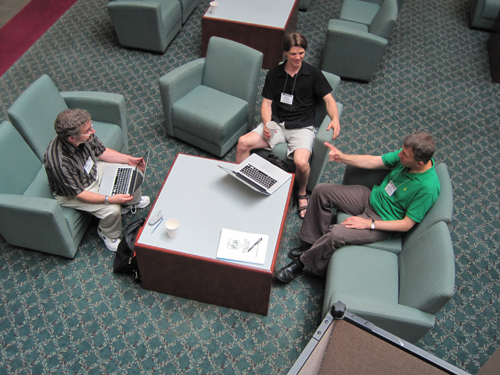Mediating mesons
Nuclear physicists gather here to sort out the strong force
Nuclear and particle physicists from all over the world gathered at William & Mary's Sadler Center the first week of June to discuss nothing less than how the visible universe is assembled.
It's called MENU2010, the 12th International Conference on Meson-Nucleon Physics and the Structure of the Nucleon. The gathering was hosted by William & Mary and the Jefferson Lab. Physics Professor David Armstrong, one of the MENU2010 organizers, points out that hosting the international nuclear physics community has been a boost to the College's reputation.
"They all know about JLab," Armstrong said. "They're familiar with the work that goes on down there at what I call our ‘backyard accelerator.' But we got a lot of people asking what university the College of William and Mary is affiliated with."
He added that Chair Keith Griffioen gave an introductory talk in which he explained to the more than 200 attendees that, at William & Mary, physics is a large-research, Ph.D.-granting department.
The "nucleon" in the conference title refers collectively to the proton and neutron of the atom. Armstrong explains that physicists have long known that the proton and neutron are not elementary particles. Rather, each is built from three smaller particles known as quarks, held together by a fundamental action known simply as the "strong force." Mesons-constructed from a quark and an antiquark-mediate (or effect) the interaction of the components of the nucleon.
The focus of MENU2010, Armstrong explained, is on the precise role of the mesons and how they do their subatomic work. There is room for the contributions of both theorist and experimenters; the presentations are divided almost equally along the theory/experimentation line, he added.
Armstrong and Wally Melnitchouk of the JLab are co-chairs. Will Detmold, assistant professor of physics at William & Mary, is a member of the organizing committee.
MENU2010 is the latest in a series of conferences held every three years. Previous conferences have been held in Germany, China, Switzerland and other international venues.
















